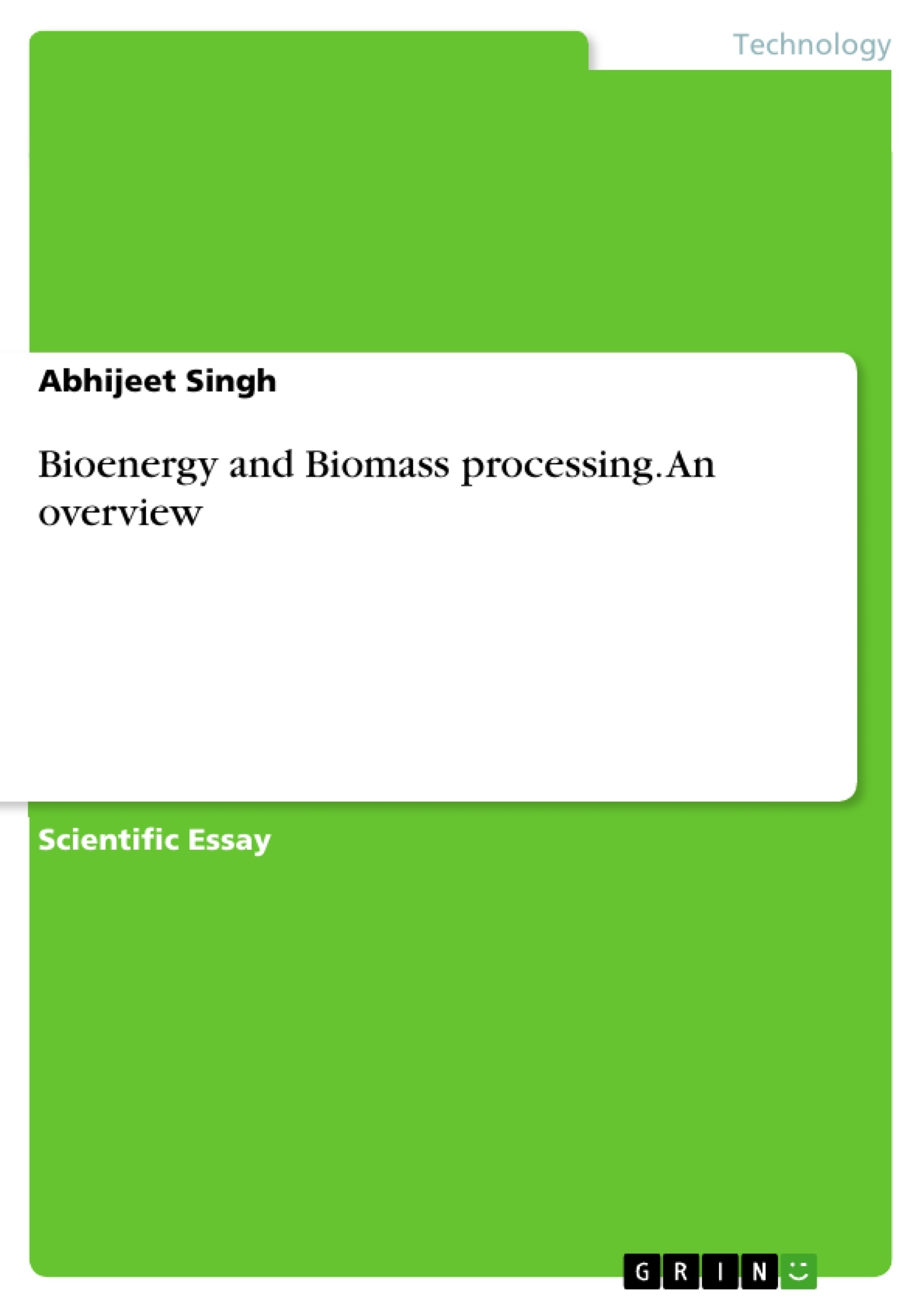The extensive use of fossil fuels has created a global problem of pollution and other environmental menace. Nevertheless, there is huge increase in the awareness and global involvement in the environmental conservation and sustainable ecosystem. This impetus in the natural conservation inspired to think for the alternative and renewable resources to meet the energy demand of the increasing population. The concept of bioenergy is one of the very important part and pivotal factor of the recent trends in the alternative energy regime. In this review, a brief introduction of the bioenergy and biomass processing is presented with the overall reconsideration and future overview of the bioenergy and society.
Inhaltsverzeichnis (Table of Contents)
- Abstract
- Introduction
- Bioenergy and Biomass processing
- Feedstock
- Conversion routes
- The transformation of energy Biomass to Bioenergy
- Processing Biomass
- Solid Biofuels
- Liquid biofuels
- Gaseous biofuels
- Biomass and biogas production
- Modern research approach in bioenergy
- Bioeconomy and biorefining
- Merits and demerits of the biofuels
- Additional important factors of the bioeconomy
Zielsetzung und Themenschwerpunkte (Objectives and Key Themes)
This review provides an overview of bioenergy and biomass processing, highlighting the importance of renewable energy sources in addressing environmental concerns and meeting the growing energy demands of an increasing global population.
- The environmental impacts of fossil fuels and the need for sustainable alternatives.
- Different types of bioenergy and biomass processing methods, including solid, liquid, and gaseous biofuels.
- The role of microorganisms and metabolic engineering in enhancing biofuel production.
- The concept of bioeconomy and biorefining as a sustainable approach to resource utilization.
- The potential and challenges of bioenergy in addressing global energy needs.
Zusammenfassung der Kapitel (Chapter Summaries)
- The introduction highlights the historical reliance on fossil fuels and their detrimental environmental impacts. It also emphasizes the growing awareness and global efforts towards environmental conservation and sustainable energy sources.
- The chapter on bioenergy and biomass processing delves into the various feedstocks, conversion technologies, and biofuel types. It provides a detailed overview of the different stages involved in transforming biomass into usable energy.
- The chapter on solid biofuels discusses the classification, standards, and pre-treatment methods for solid biomass materials. It explores techniques like pelletisation, pyrolysis, and torrefaction for maximizing energy extraction.
- The chapter on liquid biofuels explores first and second-generation biofuels, focusing on the production of bioethanol and biodiesel. It also touches upon the emerging third-generation biofuels derived from agricultural residues and algae.
- The chapter on gaseous biofuels examines biogas, hydrogen, and dimethyl ether as potential alternatives to fossil fuels. It explains the anaerobic digestion process for biogas production and its various applications.
- The chapter on biomass and biogas production delves into the microbiology and biochemical pathways involved in biogas production. It emphasizes the importance of maintaining optimal conditions for efficient biogas yield.
- The chapter on modern research approaches in bioenergy highlights the advancements in metabolic engineering, particularly the use of cyanobacteria for biofuel production. It also discusses the application of biosensors for enhancing biofuel pathways.
- The chapter on bioeconomy and biorefining explores the concept of a sustainable economy based on biomass resources. It examines the potential of pulsed field electric field technology in biorefining processes.
- The chapter on merits and demerits of biofuels discusses the advantages and disadvantages of biofuels compared to fossil fuels. It acknowledges the challenges in fully replacing fossil fuels with bioenergy.
- The final chapter explores additional factors influencing the bioeconomy, such as the development of electric vehicles and the integration of bioenergy into various sectors.
Schlüsselwörter (Keywords)
This review focuses on key terms and concepts related to bioenergy and biomass processing. The main areas of research include renewable energy sources, sustainable energy production, biomass conversion technologies, biofuel production methods, anaerobic digestion, metabolic engineering, biosensors, bioeconomy, and biorefining. Key themes include the environmental impact of fossil fuels, the need for sustainable alternatives, and the potential of bioenergy to address global energy needs.
- Quote paper
- M.Sc. Abhijeet Singh (Author), 2017, Bioenergy and Biomass processing. An overview, Munich, GRIN Verlag, https://www.grin.com/document/372220



